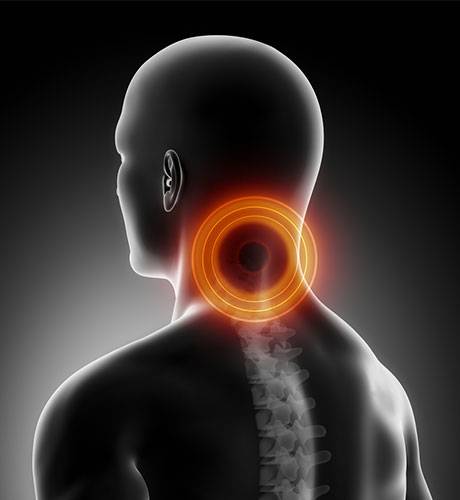With today’s technology, phones and computers are becoming more and more a part of our activities of daily living. Although this creates convenience for our lives, it can lead to adverse health conditions in the mechanics of the spine, including cervical spinal stenosis.
Cervical spinal stenosis, also known as cervical stenosis, occurs when mechanical misalignments from trauma cause the cervical spinal nerve openings to narrow. Compression of the spinal cord, also known as myelopathy, can result in neurologic impairments if the space within the spinal canal is mechanically narrowed.
FIX24 Joint Biomechanics assesses spinal biomechanics with an emphasis on an engineering approach to detecting and developing treatment protocols for cervical spinal stenosis. We’ll outline the cause of this condition and the proper treatment protocols for cervical spinal stenosis.
 What Causes Cervical Spinal Stenosis?
What Causes Cervical Spinal Stenosis?
Looking down too much, such as when we look down at our phones or at our computer keyboards, accelerates mechanical stress in the neck and causes the cervical vertebra to shift backward resulting in impingement of the nerves. Many headaches can be traced back to neck flexion (looking down excessively) while looking at phones and computers.
Once the nerves in the neck are compressed, adverse changes in the organs and glands associated with impinged cervical neurology will soon start to produce unwanted health symptoms.
Cervical spinal stenosis can result in headaches, vertigo, high blood pressure, ringing in the ears, sleep apnea, difficulty swallowing, thyroid malfunction, loss of range of motion, neck, shoulder, arm, wrist pain, and numbness in the arms and hands, including neuropathy.
Once the cervical vertebra misaligns, accelerated degenerative changes can be observed on weight-bearing X-rays. Disc degeneration or disc desiccation can lead to a lifetime of neck pain and the inability to move the neck freely. This can affect a person’s ability to drive an automobile safely and even lead to a loss of independence.
What to Avoid When You Have Cervical Spinal Stenosis
If you find yourself dealing with cervical spinal stenosis, do your best to avoid sitting in a face-down position for extended periods. If your job involves looking down at a phone, tablet, or computer, take regular breaks and practice gentle extension stretches to keep your muscles relaxed. You should also avoid high-impact sports such as jogging, basketball, or football, as these can increase mechanical trauma to the spine. If possible, avoid jerky movements or sharp motions that could place strain on your spinal ligaments. It’s also ideal to avoid lying in one position for any length of time and using flat non supportive pillows to sleep with since this can exacerbate the symptoms of cervical spinal stenosis.
Treatments for Cervical Spinal Stenosis
There is a biomechanical treatment for cervical spinal stenosis.
FIX24 Joint Biomechanics can help treat your cervical spinal stenosis through engineering methods that involve taking a unique look at optimum health by focusing on joint biomechanics, nerve function, and organ physiology.
While some offices might outsource treatment to third parties or jump to the most extreme option, FIX24 Joint Biomechanics takes pride and experience in restoring your body’s physiology and biomechanics to it’s optimal level without twisting the neck or spine.
We focus on defined structural and mechanical correction of orthopedic injuries so your body can feel it’s best without surgery and pain killers.
Get Help With Cervical Spinal Stenosis
Cervical spinal stenosis can have an impact on your everyday life… by taking action and making some lifestyle accommodations, life can by restored!
If you want to learn about natural engineering based, structural approaches to managing cervical spinal stenosis, FIX24 Joint Biomechanics is here.
Contact us to learn more about our cervical spinal stenosis treatment options and to discover how we can help treat your pain.
Our team is ready to assist you in living a pain-free life!